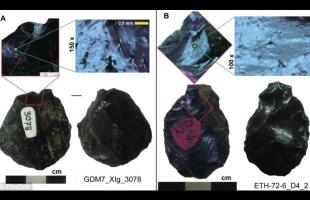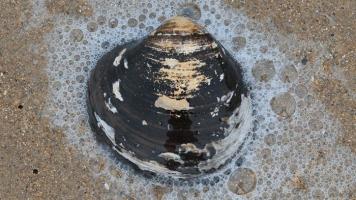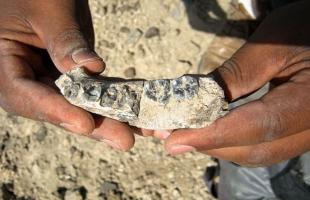Copy Link
Add to Bookmark
Report
Cider Digest #1298

Subject: Cider Digest #1298, 7 February 2006
From: cider-request@talisman.com
Cider Digest #1298 7 February 2006
Forum for Discussion of Cider Issues
Dick Dunn, Digest Janitor
Contents:
RE: Annie Proulx ("Pat Maloney")
Cider limbo (Scott Smith)
Apple tree pruning (Jason MacArthur)
calcium re: 1297 ("Mike Beck")
fermentation speed/differences ("Mike Beck")
Fermentation times (Tim Bray)
Apples in bottles ("John Jeffs")
More Harrison data from the lovely and talented Diane Flynt ("John C. Camp...)
Send ONLY articles for the digest to cider@talisman.com.
Use cider-request@talisman.com for subscribe/unsubscribe/admin requests.
When subscribing, please include your name and a good address in the
message body unless you're sure your mailer generates them.
Archives of the Digest are available at www.talisman.com/cider
----------------------------------------------------------------------
Subject: RE: Annie Proulx
From: "Pat Maloney" <pmaloney@callatg.com>
Date: Sat, 4 Feb 2006 11:43:50 -0800
Lee Passey <lee@novomail.net> wrote:
>A brief discussion on how to make apple brandy can be found in Annie Proulx
& Lew Nicols' book "Cider: >Making, using & enjoying sweet & hard cider",
(Storey Publishing, 2003, www.storey.com).
This is one of the first books I read on cider making and I'm glad to see
it's still (or back?) in print.
As good as it is, I think more people are now aware of Annie's amazing
writing ability after seeing the recent blockbuster based on her short story
- - "Brokeback Mountain." http://annieproulx.com/
Pat
------------------------------
Subject: Cider limbo
From: Scott Smith <scott@cs.jhu.edu>
Date: Sat, 4 Feb 2006 15:04:57 -0500
Its the cider limbo: how slow can you go? (the fermentation rate,
that is)
I have always worked to get the slowest fermentation possible, and I
seem to have succeeded beyond my hopes this year -- it recently
seemed to stop. This is a keeved cider fermenting at 43F with
natural yeasts only, no addition of any kind. I decided to up the
temperature to around 47F and it seems to be picking up a bit now. I
measured the SG and it is losing a point every four days, having
started at 1.070 and being at 1.050 now. The good news is the flavor
seems to be much more aromatic than my past batches; all I am worried
about is having it stall. I noticed Claude's comment about a year in
the carboy which seems to imply an even slower rate than mine, which
should be finished by early summer at its current rate.
Having never explored this territory of "too slow", I am curious
where others draw the line and what you do. I expect I will probably
keep the temperature up and not risk having it stall if I lower it
again. I went back and looked at that Danish article surveying
French cider makers and the temperatures listed there were in the
45-55F range (7-12C), so it seems I am still on the low end at 47F.
Also while I am asking a question I am curious what temperatures
people run MLF at. I have run it in the past at 65-70F (just take
the carboy out of the fridge) since the culture packet recommends
higher temperatures. I find the fermentation can start up a bit when
I raise the temp, and then I get a cider drier than I want. I am
debating whether I could go for something like 55F that would be warm
enough to get a MLF but keep the yeast fermentation from getting out
of hand. I should add that my goal is to produce a cider with
residual sweetness, so I want the MLF to run when there is still a
good amount of sugar left in the juice. In reading that Danish
article again I notice that two of the French producers mentioning
MLF claim to let the MLF occur in the bottle; one place mentions 50F
(9-10C) as the temperature in which they mature the bottled cider for
two months and "sometimes" MLF naturally occurs; the other place does
not give a temperature but seem to indicate MLF always occurs in the
bottle for them. A third place mentions 56F (13-14C) to mature with
MLF, in steel tanks and not bottles and over a period of 2-10 months.
Scott
------------------------------
Subject: Apple tree pruning
From: Jason MacArthur <rotread@localnet.com>
Date: Sun, 5 Feb 2006 07:40:09 -0500
I have a few dwarf apple trees going into 3rd leaf with lower tier
branches which are almost equal to the size of the trunk. In fact, the
trunk narrows significantly above these branches- clearly they are
draining significant resources from the central leader. Reading
through the pruning literature there seems to be a great deal of
conflicting advice on how to deal with a situation like this, from
"never prune a branch until it's fruited" to "don't bother growing a
whole side of the tree you will only need to cut out later".
The longer I wait the larger these branches get, so I am wondering
what to do. Is there any way to significantly slow them down enough to
allow the trunk to regain dominance? Or should I hack the tree back to
a whip and start all over?
Thanks and happy growing,
Jason MacArthur
Marlboro, Vt.
------------------------------
Subject: calcium re: 1297
From: "Mike Beck" <mjbeck@ujcidermill.com>
Date: Sun, 5 Feb 2006 11:11:51 -0500
Dick asks about calcium in digest# 1297
We use calcium mostly for Honey Crisp to help mitigate its wild bitter pit
affliction. For Honey crisp we may add a foliar spray of calcium once a
week or more. If it is hot and dry it ends up being more. Other verities
can have this problem. Honey Crisp is really notorious for it. The rest of
the orchard does usually get calcium once at a timely application. I do not
have a clue how calcium treatments affect a fermentation, keeved or not. I
have heard (with nothing to substantiate) that calcium applications may
increase brix marginally. I would like to know more myself if anyone has
insight.
mike beck
st.johns, mi
------------------------------
Subject: fermentation speed/differences
From: "Mike Beck" <mjbeck@ujcidermill.com>
Date: Sun, 5 Feb 2006 11:46:55 -0500
Digest #1297 fermentation speed/ML
I would like to point out that yeast fermentation and ML are two separate
and different chemical changes. Each with their own problems and rewards.
They should never be lumped, IMHO. Related to speed. If I could get a
lower temp. fermentation I could no doubt slow this process down. I use well
water to chill tanks and that is as about as low as I can go. Regardless, I
still will not hesitate to use nutrients/DAP when I can smell the
funkiness/sulphourous yuckies. Sadly, I am limited by time and the ciders
have to be ready to market by next fall. They have the advantage of being
fresh and fruity and appealing to many. Or is it appalling to many?
mike beck
st. johns, mi
------------------------------
Subject: Fermentation times
From: Tim Bray <tbray@mcn.org>
Date: Sun, 05 Feb 2006 21:31:48 -0800
Dick asked for more comparative input on fermentation rates.
My 2004 crop ciders took 6 to 9 months to finish out and get into the
bottles. The best cider took the longest. I deliberately slowed
fermentation, clarifying the juice before letting fermentation start, and
racking multiple times.
I didn't end up pressing any of the pitiful 2005 crop, so nothing to try
keeving with. Fortunately I still have 4 or 5 cases left from 2004.
Cheers,
Tim
------------------------------
Subject: Apples in bottles
From: "John Jeffs" <pdms@senet.com.au>
Date: Mon, 6 Feb 2006 21:51:19 +1030
Hi All,
Just curious if anyone would know which apple varieties are best suited to
be grown in bottles to be filled with apple brandy? Also, is there another
way to put an apple in a bottle instead of actually growing the apple in the
bottle?
Many Thanks
John Jeffs
C/- Post Office
Lenswood
S.A.
Australia
5240
Ph/Fax: (08) 8389 8554
Mob: 0409 289 019
Email: pdms@senet.com.au
------------------------------
Subject: More Harrison data from the lovely and talented Diane Flynt
From: "John C. Campbell III" <jccampb@tseassoc.com>
Date: Tue, 07 Feb 2006 14:00:33 -0500
As she promised me, Diane was gracious enough to pass off some more data
on the Harrisons (from her first hand experience with them). We all owe
her a debt of thanks ... see below. Hopefully her cider venture will
take off with a bang this year. She, like the Sheltons, (Vintage
Virginia Apples) have been strong supporters of Tom Burford's efforts.
jccampb
- -------------------------------------
"... Note that my orchard is at 3000' in the Virginia Blue Ridge
mountains. Results will vary as you know!
Harvested Harrison on 10/8/05
14.0 Brix
Brown seeds, creamy flesh, tart balanced juice
I field tested Harrison on 9/24 (Brix 12.25, seeds brown, flesh creamy
but thin and tasteless) and on 10/1 (Brix 13.75, again thin and
tasteless). This is one apple that, at least in my orchard, requires a
careful eye during harvest.
Sweated fruit on cool concrete floor for 3 days.
At pressing Harrison SG 1.070
I fermented my small supply of Harrison as 50% of a cider mixture, with
the other 50% being Margil, Roxbury Russett and Rhode Island Greening.
Total SG for this mixture was 1.060. Post fermentation the cider is
8.9% alcohol and 0.71 g/100mL Total Titratable Acidity. This cider is
golden honey in color with fresh apple aromas and a nice acid balance,
at least to my taste.
Let me note that I've found Harrison to be a shy bearing tree. I grow
this variety on M111 and had my first harvest on trees that are in
their 6th leaf only this past fall, at least two years later than what
I consider the more successful varieties on my site (Margil, Roxbury
Russett, Cox, etc). Harrison is difficult to spread and this variety is
not the most disease resistant in my low spray orchard. But the juice
has a mouth feel and texture unlike any apple I grow other than the few
Kingston Black and Stoke Red I am able to coax into harvest. ..."
------------------------------
End of Cider Digest #1298
*************************






















